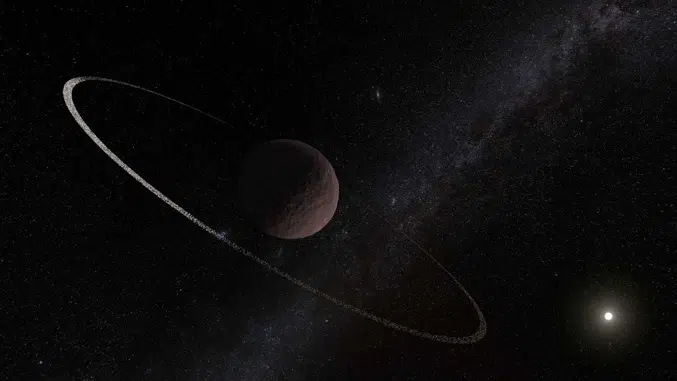
A ring system recently discovered by astronomers calls into question the current theories of how ring systems are formed, as it orbits much further out than is typical for other ring systems. The planetary ring was observed on the edge of the Solar System, around the dwarf planet Quaoar, which is approximately half the size of Pluto and orbits the Sun beyond Neptune.
The study involved 59 academics from all over the world, led by the Federal University of Rio de Janeiro in Brazil.
State-of-the-art technology
A state-of-the-art, extremely sensitive high-speed camera, called HiPERCAM, was key to the discovery.
Developed by scientists at the University of Sheffield, HiPERCAM was mounted on the world’s largest optical telescope, the 10.4 metre diameter Gran Telescopio Canarias (GTC) on La Palma.
As the rings are too small and faint to see directly in an image, the researchers made their discovery by observing an occultation, when the light from a background star was blocked by Quaoar as it orbits the Sun.
The astronomic event lasted less than a minute, but was unexpectedly preceded and followed by two dips in light, indicative of a planetary ring around Quaoar, the University of Sheffield describes in an article.
New ring system forces rethink on theories
Ring systems are relatively rare in the Solar System, the University of Sheffield explains. Besides the well-known rings around the giant planets Saturn, Jupiter, Uranus and Neptune, only two other minor planets possess rings – Chariklo and Haumea.
All of the previously known ring systems survive because they orbit close to the parent body, the planet, so that tidal forces prevent the ring material from accreting and forming moons.
What makes the ring around Quaoar remarkable, is that it lies at a distance of twice as far out as what was previously thought to be the maximum radius according to the outer limit of where ring systems were thought to be able to survive.
This discovery has therefore forced a rethink on theories of ring formation, the University of Sheffield concludes.
“Everyone learns about Saturn‘s magnificent rings when they’re a child, so hopefully this new finding will provide further insight into how they came to be,” says Professor Vik Dhillon, co-author of the study from the University of Sheffield’s Department of Physics and Astronomy.
See all the latest news from Greece and the world at Greekreporter.com. Contact our newsroom to report an update or send your story, photos and videos. Follow GR on Google News and subscribe here to our daily email!



